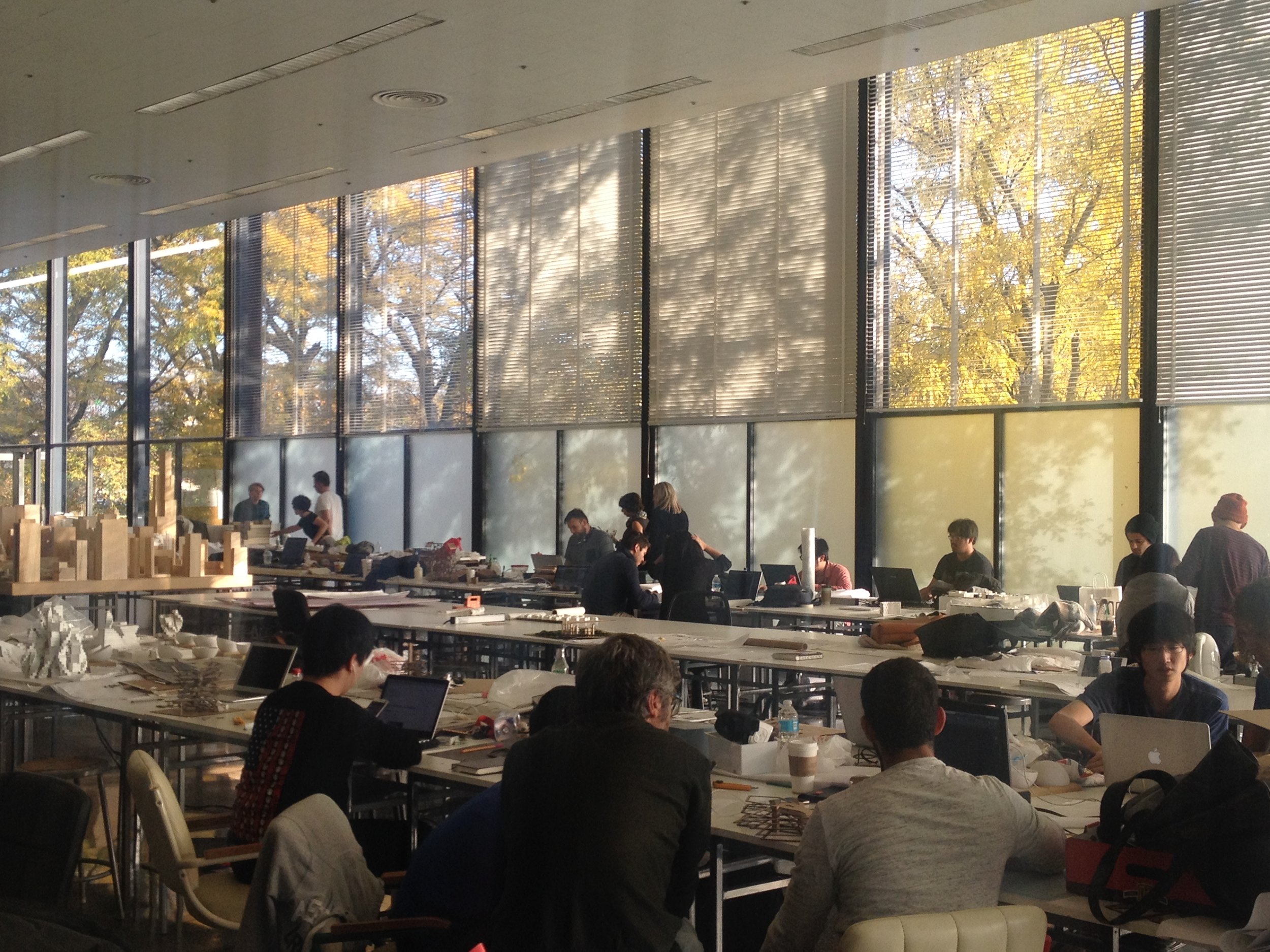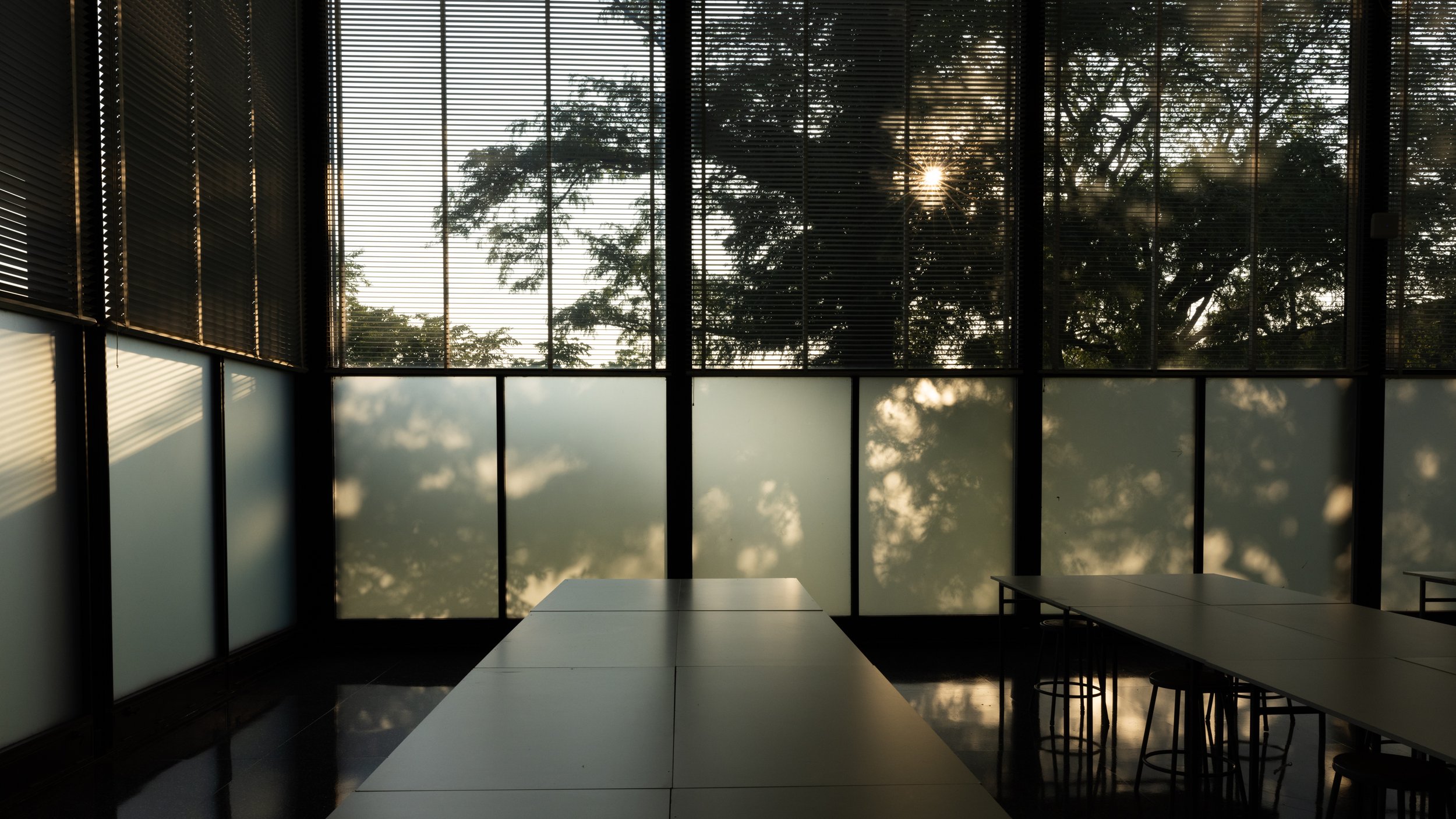The Finely-Textured Canopy of Modernism
Exhibit Columbus 2016
DWELL 2017
The Cultural Landscape Foundation 2017
Graham Foundation 2018
arc en rêve centre d'architecture 2021
Collaborators Furnace FPS
A series of lectures, articles, sketchbooks, and exhibitions explore Gleditsia triacanthos, the honey locust, and its relationships with modernist space.
In a period of about a decade from the mid-1950s to the mid-1960s, many of the most iconic landscapes and gardens of American modernism were planted with Gleditsia triacanthos, the honey locust tree. Foremost among these are a collection of projects by Alfred Caldwell and Dan Kiley in the American midwest: Caldwell Farm, South Garden of the Art Institute of Chicago, Milton Lee Olive Park, Miller House and Garden, Skyline Park at Lake Point Tower, and the campus of the Illinois Institute of Technology, among others.
In contrast to Caldwell's irregularly spaced planting of thorny, pod-laden honey locusts, Kiley's use of the tree was in orderly allees or precisely spaced masses of the thornless varieties. Each represents different attitudes toward Gleditsia - the finely textured canopy of Modernism.
The Modernist’s Tree: America’s first patented shade tree is as high design as a plant can be. Ron Henderson, DWELL, February 2017
There is a certain refinement about this tree, and in its golden-yellow autumn color it gives a soft light to the landscape. Jens Jensen, SIFTINGS, 1939




